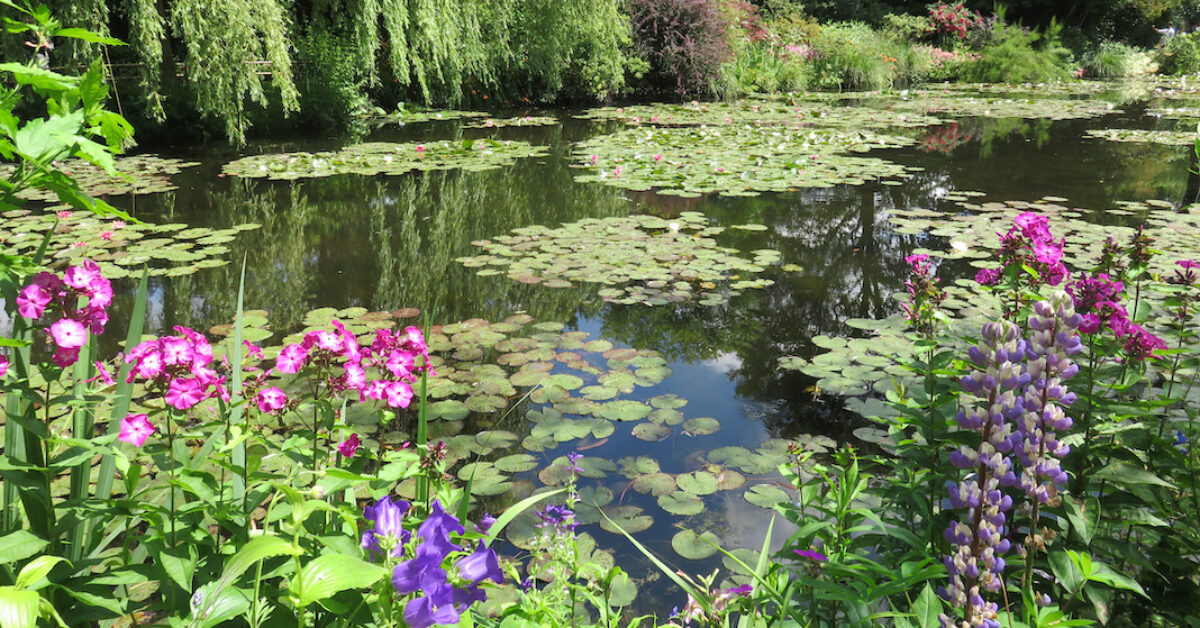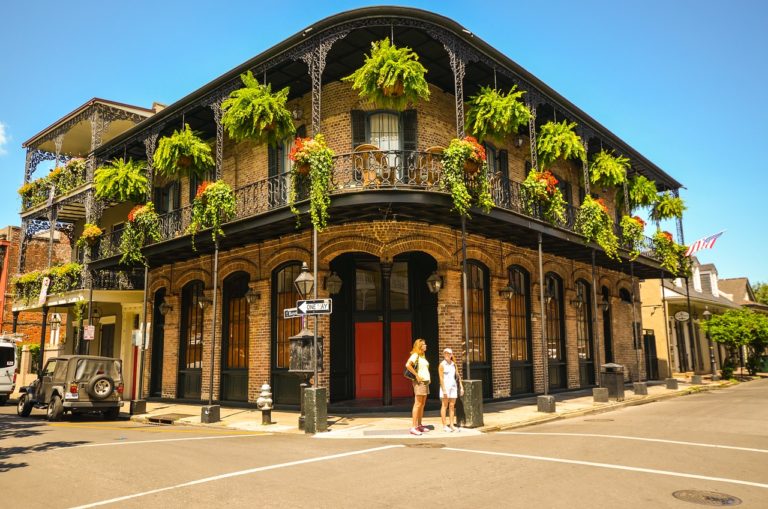Giverny, a small picturesque village in Normandy, is both only an hour, and an entire world away from Paris. Home to French impressionist painter Claude Monet, the small village that became famous for the artist’s famous garden whisks visitors away from city life to a dreamscape of water lilies and Belle Époque nostalgia. Known as the Gilded Age in the United States, La Belle Époque refers to the twilight at the end of the 19th century in France, before the darkness that would become World War I in 1914. It was a short span of time representative of a lost world, and it was during this time that Monet made his home in Giverny. More than a century later, Monet’s flower garden at Giverny has been seen by much of the world, as it would go on to become the inspiration for some of the artist’s most famous works.
Claude Monet’s estate and gardens, a must-see when visiting France, are open to the public from April first through November first, during which time 500,000 visitors flock annually to the site. Monet specifically designed his gardens so that they would be in bloom year round. But the waterlilies that Claude Monet painted, immortalized in the artist’s famous Nymphéas paintings at the Orangerie museum in Paris, reach their peak in July. Not coincidentally, July is also the most popular time to visit the garden. In order to maintain the garden’s peaceful atmosphere even in peak tourist season, admission is offered for specific time slots, so visitors should plan accordingly and visit Giverny’s website to purchase tickets online in advance. The website gives detailed practical information on how to get to Giverny, as well as accommodation in the area if visitors choose to extend their day trip and stay the night.
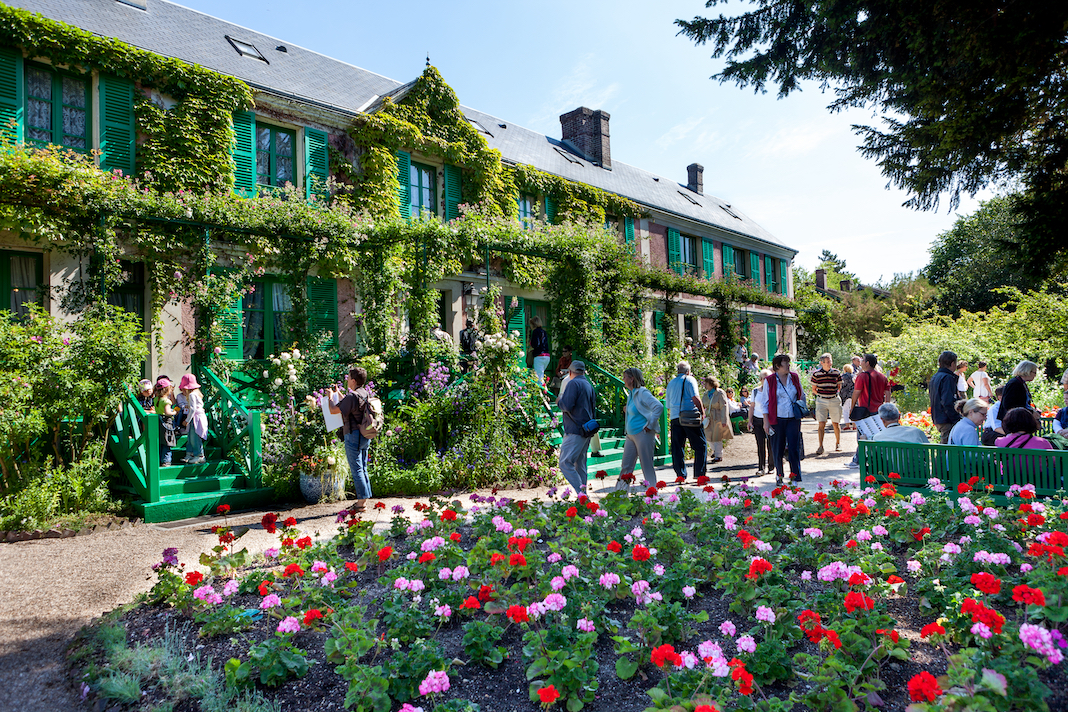
Once you arrive at the Vernon-Giverny train station in Giverny, only an hour’s train ride from the Gare Saint Lazare in Paris, a shuttle bus takes visitors the rest of the way to Monet’s house and garden for a round trip fee of 10 euros. Although traveling by car or signing up for a guided tour and bus trip is also possible, travel by train may be the most authentic way of going to Giverny, as this was the way Monet himself discovered the property – from the window of a passing train on a trip from Paris. He fell instantly in love with the land, and swore, even from his distant view from the train’s window, that he would live there. Claude Monet bought a country house in Giverny and moved there in 1883, where he remodeled the house, at the time abandoned and in ruins. He designed not one but two gardens, which he would go on to call his greatest masterpiece, and which gave him inspiration and solace up until Monet’s death.
Attractions in Monet’s Garden at Giverny
Today, visitors can visit both of Claude Monet’s gardens at Giverny, the Clos Normand and the Water Garden, in addition to Monet’s estate.
The Clos Normand
The first garden, right in front of the house where Monet lived out the remainder of his life, is known as the Clos Normand. This magnificent wildflower garden brims with hundreds of irises, tulips, daisies, poppies, dahlias, roses, and sunflowers, along with rare varieties of lilies, which bloom all spring and summer long. Unlike typical French gardens, which are designed with a clear structure and shape, such as the gardens of Versailles, Monet created the Clos Normand to have the same disregard for rules, and passion for blurred edges and lines, as Impressionist paintings themselves.
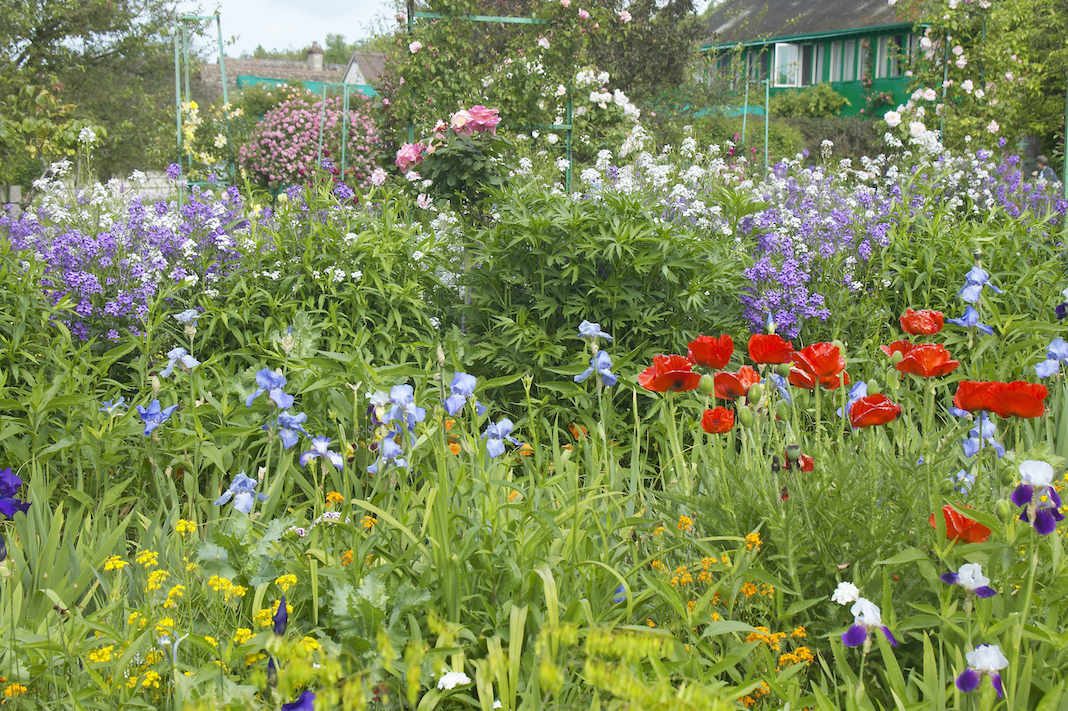
The Water Garden
The second garden is the Water Garden, which can be accessed through an underground passage, and was inspired by sketches of Japanese gardens that Monet collected. It is complete with two ponds fed by a tributary of the Seine river, a Japanese bridge shaded in wisteria vines and weeping willows, and of course, Monet’s famous water lilies, les Nymphéas. In the Water Garden, Monet was not once, but twice an artist – first creating, designing, and bringing his inspiration to life as he built the garden, and then later re-creating the gardens in paintings that would become iconic masterpieces. To preserve the gardens, visitors are required to stay on designated walkways, and while taking photos is allowed, picnics in the gardens are not permitted.
Japanese Bridge
Poised over the Water Garden is the Japanese Bridge, a small green footbridge that crosses over the water lily pond. The surrounding trees and greenery seem nearly to swallow the bridge whole, but art lovers will be sure to recognize it from the artist’s famous 1899 painting, “The Japanese Bridge,” which remains one of the most iconic pieces of Claude Monet’s work. (“The Japanese Bridge” currently lives at the Musée Marmottan Monet in Paris.) The bridge and the Japanese garden that surround it were inspired by Monet’s collection of Japanese prints, which can be viewed at Monet’s house when you visit Giverny.
Claude Monet Foundation
Visitors to the Foundation Claude Monet (which comprises Monet’s house and garden) can explore the estate in which Monet lived in for 43 years, until his death in 1926. The estate, a vibrant example of French country living, was reconstructed by Monet himself from abandoned ruins when he moved there in 1883. Following his death, his son and step-daughter inherited the property, however it fell once again into disrepair after World War II. It wasn’t until the late 1970s that restoration work began on the house and gardens to restore them to the way they had been in Monet’s time. The project took nearly 10 years to complete – windows were shattered from bombings during the war, portions of the ceilings had collapsed, floorboards had rotted, staircases had crumbled, the pond had dried up, and portions of the garden had begun to overtake the house, with an entire tree growing inside the studio. However, under the guidance of artist colleagues and friends of Monet, the estate was restored to its original beauty, and has been open to the public since September of 1980. You can wander through the halls, and even see Monet’s bedroom, which Monet built to give him pristine views of the gardens.
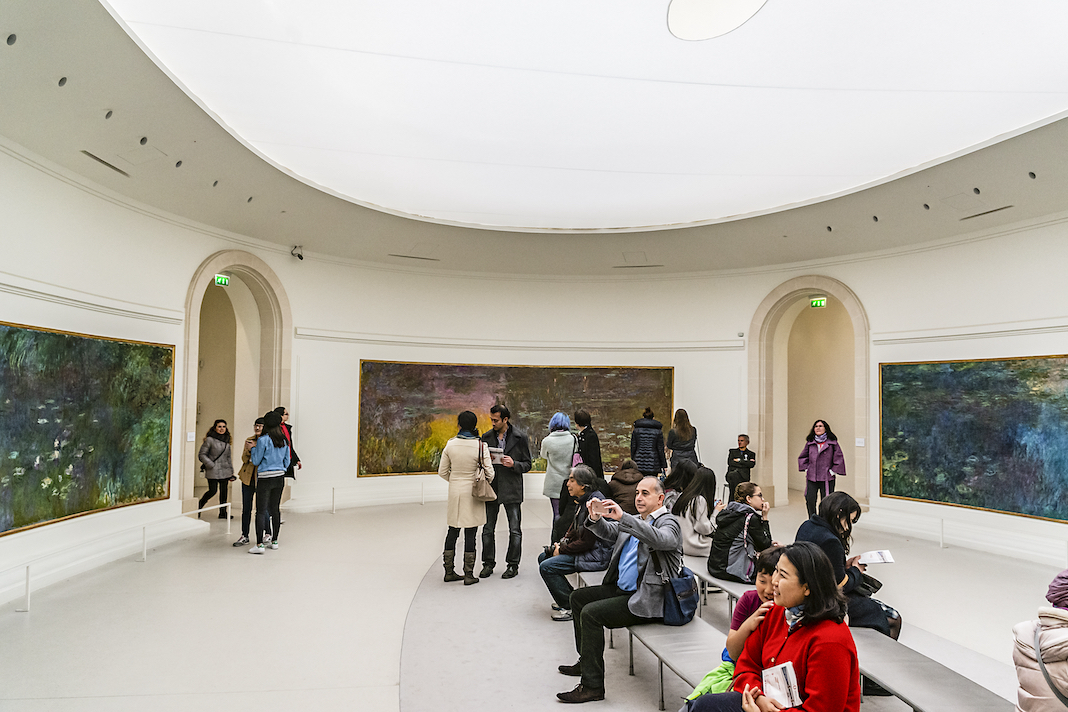
Places to See Around Monet’s Garden at Giverny
Many who come to Monet’s house and gardens are inspired to learn more about Impressionism, and the artists who made the movement famous. But there are plenty of things to do in the Giverny area, and visitors will not regret exploring this charming town.
Musée des Impressionnismes
Visitors to Giverny can discover more about this artistic period at the nearby Musée des Impressionnismes. The museum offers guided tours, artistic workshops for children and families, concerts (tickets for which are all available for purchase on the museum website), and it even has its own garden, a nod to Claude Monet’s understanding of the intrinsic connection between Impressionism and nature.
Domaine de la Corniche
Although Giverny is an easy day trip from Paris, one couldn’t be blamed for wanting to extend their trip in the peaceful countryside landscape that Monet found so inspiring. While accommodation in the small village of Giverny is scarce, especially during peak tourist season, there are many other options for accommodation in the surrounding areas. For an especially luxurious stay, the Domaine de la Corniche, built in 1908, exudes all the charm of the Belle Époque era and Monet’s world, along with every modern comfort travelers could desire, including a spa and Michelin starred restaurant. Overlooking the Seine river valley, and only 15 minutes away from Giverny, visitors can fall asleep dreaming that they are a part of Monet’s latest masterpiece.
Frequently Asked Questions – Monet’s Garden at Giverny
Where are Monet’s gardens?
Monet’s house and gardens are located in the small village of Giverny in Normandy.
Is it worth going to Monet’s garden?
Monet’s garden in Giverny is a breathtaking work of art that is definitely worth a visit.
What is the best month to visit Monet’s garden?
July, when the water lilies are in full bloom, is the most popular time to visit Monet’s garden.

